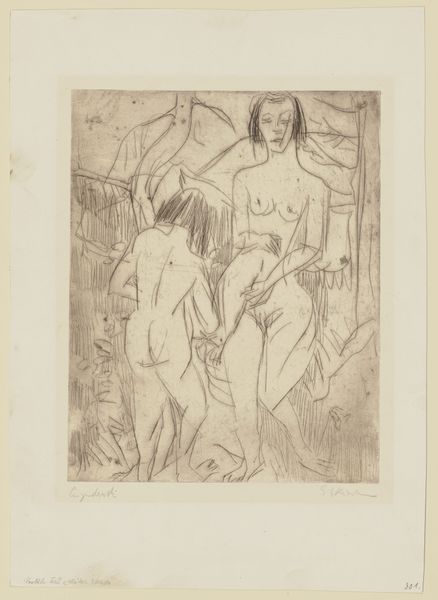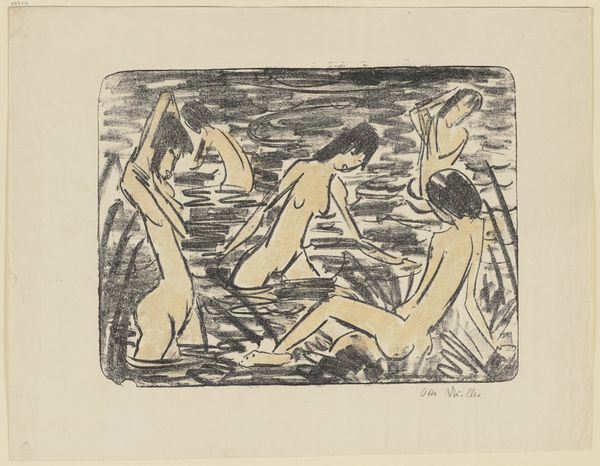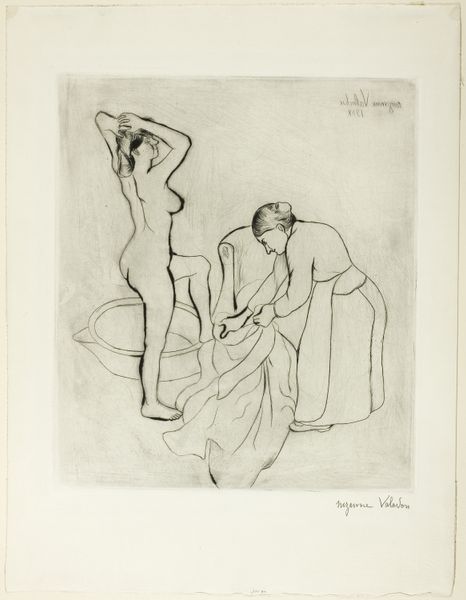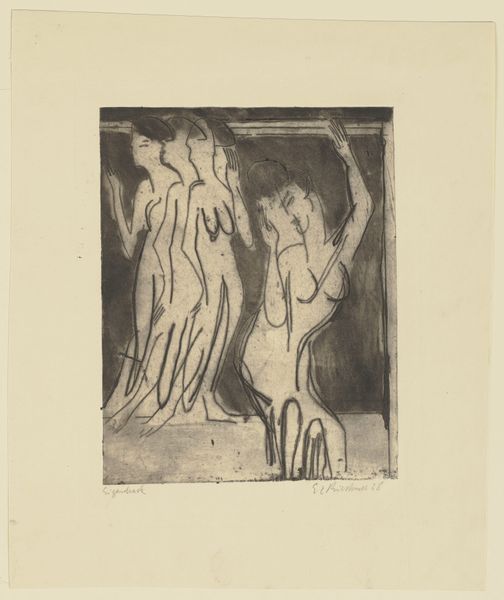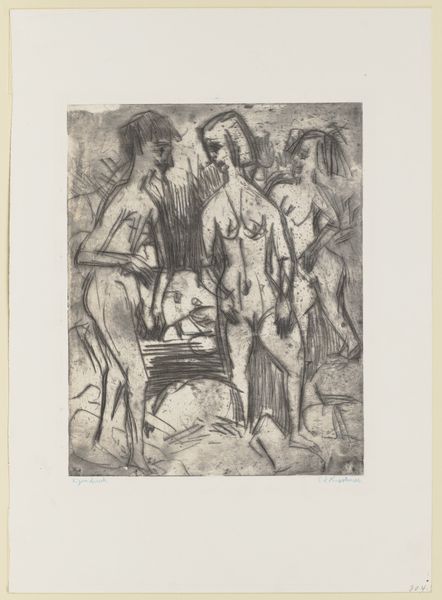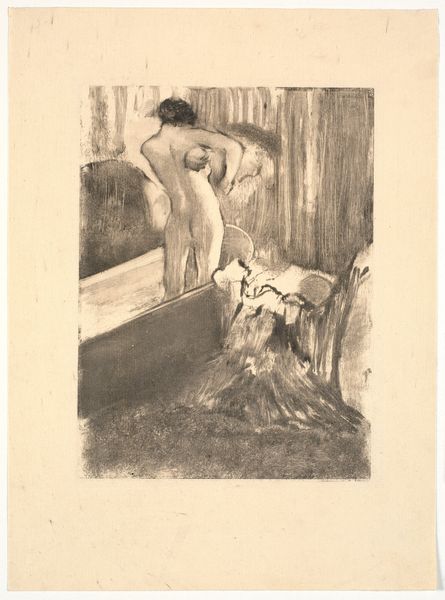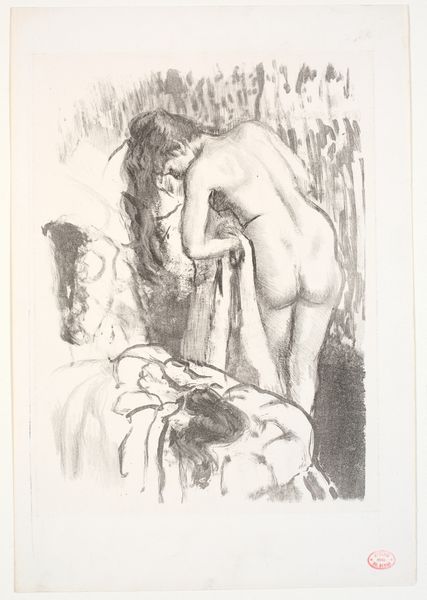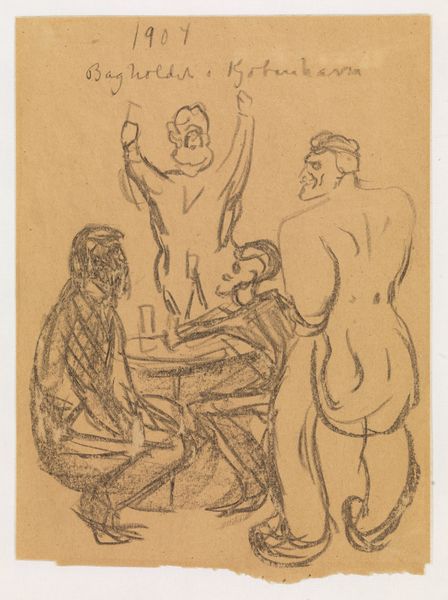
Copyright: Public Domain
Curator: This is Hermann Lismann’s “Four Nudes,” created in 1908 using ink on paper and housed right here at the Städel Museum. Editor: My first thought is that it's incredibly gestural, almost as if he were capturing a fleeting moment rather than creating a static composition. There's a lightness and fluidity to it. Curator: Absolutely, and I think understanding the era helps. Painted in Paris, 1908, the art world was still deeply entrenched in debates about representing the body and questioning academic norms. Considering Lismann’s context, we can ask: What’s he trying to say about the female nude and the way women were perceived or perceiving themselves? Editor: Right. And the process! It looks like he uses a wash technique, applying diluted ink in layers to achieve tonal variation. The speed with which ink dries dictates mark-making. Notice, too, how the varying darkness in the ink creates areas of definition without hard outlines. He really seemed interested in economy of material and swift execution. Curator: True. It appears that these figures exist in a liminal space; the lack of a definite setting creates a sense of ambiguity that pulls away from overt sexualisation. I wonder if this was a conscious challenge to the male gaze, suggesting a more private, intimate observation. Editor: Maybe so. And what about the paper itself? What kind of paper would he have chosen? Was it a costly archival sheet, or more of an inexpensive practice material? The support absolutely dictated the final visual impact of the work. Curator: Those are excellent considerations to carry forward when further investigating this piece. These are nudes freed from classical expectations, inhabiting an intimate space without specific narratives and creating something entirely new, maybe even daring, for its time. Editor: I agree, viewing it through the lens of the material helps illuminate its contemporary context. Looking at the paper and ink gives insight into the labor that makes up its history and situates the piece within a tradition of draftsmanship.
Comments
No comments
Be the first to comment and join the conversation on the ultimate creative platform.

